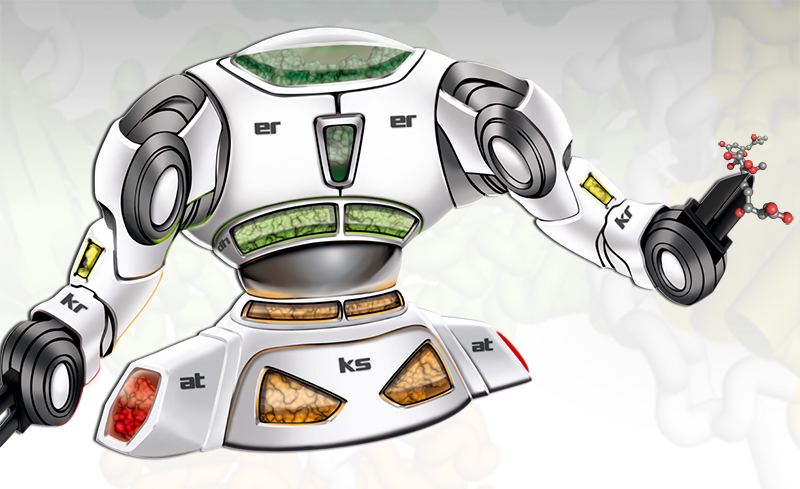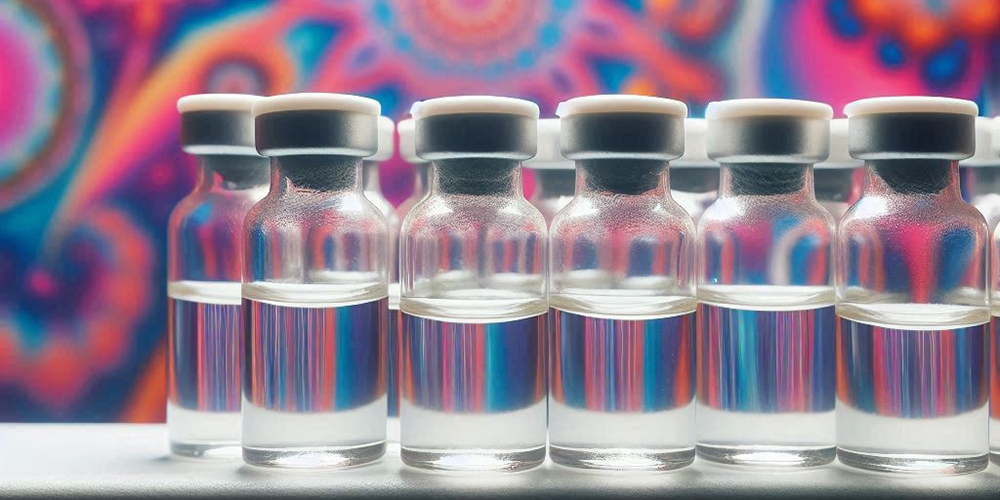Assembly line: How Bacteria and Fungi Produce Drugs
Natural products from bacteria and fungi are an important source of current and novel drugs, such as antibiotics. They are produced in the microorganisms by giant protein complexes that resemble industrial assembly lines. Researchers at the Biozentrum of the University of Basel have published the precise blueprint of one of these proteins in the current issue of “Nature”. In the future, engineered assembly line proteins may help to produce a variety of drug candidates.
15 March 2016
In an assembly line every step of work must be carried out precisely, each station has its specific position and task. This effective form of labor distribution is also employed by nature. Fungi and bacteria synthesize complex bioactive compounds using molecular assembly lines, the so-called polyketide synthases (PKSs). Their products include important antibiotics, anticancer agents and also the cholesterol-lowering agents known as statins. The product spectrum is directly determined by the variable architecture of the PKSs. Prof. Timm Maier’s team at the Biozentrum, University of Basel, has studied their molecular structure in detail.
Enzymes work like an assembly line
PKSs are large enzyme complexes consisting of multiple modules, which catalyze a series of specific reactions. The synthesis of a complex product begins with a starter molecule that is subsequently transferred from one module to the next within the enzyme complex. During this process the intermediate is elongated and chemically modified in each module to form the final product. The function of the individual modules in the assembly line and, ultimately, the entire production process and the product structure are encoded in the sequence and order of the PKS coding genes. . Each microorganism has its own characteristic assembly lines.
In their study, the scientists led by Maier employed structure determination of a specific PKS variant, which works as a single protein molecule and not as an assembly line module, to derive general principles of PKS architecture. “The most striking discovery was that the individual protein domains are not connected by direct stable contacts as commonly observed in protein complexes”, says Maier. "In contrast, the domains of the PKSs are flexibly tethered by variable linkers." The linker elements can easily adapt to an exchange of individual rigid protein domains. This linker-based PKS architecture is thus perfectly adapted to support the evolutionary generation of novel assembly lines.
Blueprint as a basis for producing new products
The elucidation of the variable PKS architecture now provides a blueprint, showing exactly at which positions the enzymes can be modified. Maier is convinced that this knowledge will soon find practical applications: “In the future, for instance, individual protein segments could be exchanged to assemble new PKS variants for the biosynthesis of novel products. This enables production of a variety of compounds, including potential drugs, which due to their complexity are very difficult to synthesize chemically”. Still, key challenges in the understanding of PKS assembly lines remain for Maier and coworkers: They strive to understand the process of substrate transfer in and out of individual modules as well as the underlying higher order organization of multimodular PKS.
Original article
Dominik A. Herbst, Roman P. Jakob, Franziska Zähringer & Timm Maier
Mycocerosic acid synthase exemplifies the architecture of reducing polyketide synthase
Nature (2016), doi: 10.1038/nature16993
Further information
Prof. Dr. Timm Maier, University of Basel, Biozentrum, tel. +41 61 267 21 76, email: timm.maier@unibas.ch




